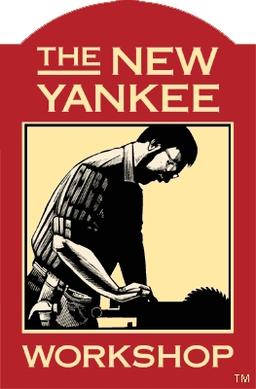Hey woodies,
I’m not a woodworker by any means, but figured it could be here to ask about my question. I love and own some wooden kitchen utensils and cutlery, but want to it to last as long as possible. I never put it in the dishwasher, always wash by hand. However I have heard its possible to oil wooden utensils and such to make it last longer, I assume it prevents the water from deteriorating the wood(?)
So my questions are:
- What oil should I use?
- Do I use cheap oil?
- How do I oil them? Apply with paper, or let them sit in oil over time?
Appreciate any tips or tricks to this!
Have a wonderful day 🌻
Edit, thanks for all the answers and advice, I’ll research properly before buying either type of oil.
Do not just go to the hardware store and buy linseed oil. It is not food safe cause it is just meant as a wood finish, and has additives to make it dry quickly. You can buy linseed (aka flaxseed) oil that is meant to be eaten, but I’ve only seen it in small bottles for a lot of money.
Mineral oil can be purchased from a pharmacy for very cheap; it’s actually sold as a laxative if you intentionally consume a bunch of it. That is what any wooden spoons or cutting boards you buy would be treated with. Some people mix it with melted beeswax, which gives a nice finish. You can also just buy it premixed and sold as " butcher block conditioner". It’s a little pricy, though, and I think it’s easiest to just use the mineral oil
You can buy pure pelletized beeswax from online vendors for dirt cheap too. Making your own Butcher Block conditioner is very inexpensive and you can control how thick you want it
The biggest downside of these finishes is that they never dry. They are always constantly washing and wiping away.
I use beeswax and mineral oil finishes a lot for my own stuff because it’s just so cheap, and it feels so soft and nice.
I’m don’t recommend it for anything you’re going to give away because you can’t trust the gift recipient to be maintaining it. Gifts should not be imposing any kind of burden.
If you’re really wanting Best in Class you want a drying type oil - pure tung or pure flaxseed. The downside is that because they dry they have a shelf life. And expensive in comparison.
Basically any curing finish is going to be food safe once fully cured, but the problem is you have no way to identify when it is fully cured, and something like store-bought linseed oil is full of extremely toxic drying agents to speed it up, some of which will get trapped just below the surface and be sealed away from the air or moisture that leads to their curing - until something like a knife cut scratches the surface and releases it onto your food. Not great. But pure boiled linseed oil and pure tung oil both are free from anything truly toxic - you’re just going to have to order them online or go to a specialty store to find the real thing.
Yes, flaxseed oil for salads is great. It just takes forever to polymerize. We’re talking weeks, maybe up to a month. But you can still use the cutlery, it will just wear off fast. You can speed it up by boiling it before use, but have to be careful to not burn it or have it go ablaze. I just use it raw and apply it from time to time, eventually it all just blends and I reapply once a year.
Boiled linseed oil is not food safe because it isn’t actually boiled. The chemicals you’re talking about are added to achieve the same change that boiling normally achieves, but it is a cheaper process so corporations lobbied for the right to called chemically treated linseed oil “boiled”, even though it’s objectively false.
It’s a great example of a corporate conspiracy.
- Linseed oil
- Should not matter, just buy local stuff (so not made in somewhere-without-regulations)
- Hands, brush, paper, rag,… Whatever you like. For the tiny amount of stuff in the picture just use fingers and or paper.
I would not use oil based (as in crude oil) stuff for food. They also do not harden, which is a big plus for linseed oil. Linseed oil has been used for hundreds of years, we know it is good for this job.
Also, the oil going rancid is how it hardens. But unlike cooking oil linseed oil does not smell bad or stay tacky or whatever.
Good to know! I’ll try to find that here asap. How often do you recommend doing this for the items in the picture?
Also beware that in the US what you might find as linseed oil is actually not pure linseed oil and contains all kinds of hardeners and evaporative ingredients to help it cure faster for furniture use. This kind is NOT food safe.
I have been using very light coats of flax seed oil which is designed for cooking on my wooden utensils and cutting boards with good success. You can also use a purpose designed cutting board wax like beeswax for utensils.
Not often. Depending on how often you use them and how you then clean them, obvious, but roughly every year should be fine.
Google boiled vs natural linseed oil before deciding! 👍
Be careful with linseed oil, the rags/paper towels you use to rub the oil on can spontaneously combust hours after you’ve thrown them away. Dispose of them properly and you’ll be fine.
I use food grade mineral oil, which can be picked up at a local pharmacy for pretty cheap.
There’s a YouTuber called the wood whisperer who did a comparison of like 8 different finishes for wooden utensils. You can try searching for that.
I think he recommends tung oil but you have to be sure it’s 100% tung oil and not a tung oil finish, which just means it has tung oil in it and may not be food safe.
I really like tung oil for spoons. After 3 coats its a very durable finish.
I use butcher block oil which is just beeswax and food grade mineral oil but any food grade oil that won’t spoil will do just fine
Howard makes a cutting board cleaner, oil, and butcher block conditioner. I use the latter every few months on our handmade boards and bowls and it keeps them well protected. The instructions on the bottle suffice for application.
If your pieces are particularly dry it might be a good idea to use the oil followed by the conditioner. I’m sure other mineral oil products would do a similar job but I’ve had good luck with this one and a bottle has lasted years.
100% pure Tung oil.
Once a day for a week.
Once a week for a month.
Once a month for a year.
Once a year every year.
I’d suggest cutting the tung oil with orange oil. It helps penetrate the wood better.
I would recommend tung oil only for utensils. I don’t recommend tung oil for cutting boards because the additional wear of the surface goes through the coating too easily and after that its a lot of time to restore the finish (tung oil requires a full month to cure after the last coat). Mineral oil and beeswax doesn’t need to cure and can be refinished in about 10 minutes.
From my personal experience on adding pure tung oil to cutting boards after about 15+ coats over a few years(I know that’s a lot of coats over a long period of time) there is now a thin solid surface on the wood. It honestly looks like a thin film finish but it’s all natural.
It is also water repellent to an extent. I think of it as a natural wood stabilizer. The oil penetrates and fills the wood pores then hardens. This prevents moisture from penetrating easily. Now I only apply tung oil once a year to my cutting boards and twice to my spatulas and wood handle knives.
The mineral oil beeswax method is the convenient way of doing it, if anyone wants to use this method I don’t blame them, but it’s my opinion that adding layers of a tung oil over a longer period of time is the proper way of doing it.
When you use mineral oil and beeswax you will remove the top layer after a few washes. Some of the mineral oil will seep further into the wood but will not protect the exterior(the cutting surface). When I used only mineral oil and beeswax I would have to reapply that finish monthly as the wood would visibly dry out.
I’ll leave it to OP which method they choose to use. One is more convenient in the beginning and one is more durable over time.
I melt parafin wax (low heat!) and mix in mineral oil. I can’t remember the ratio but you can find it online. When it cools it has the consistency of soft butter (almost).
It works exceptionally well for cutting boards. You smear it on and let it sit overnight.
5:1 (mineral oil:wax) To add to the above comment, this is effectively what’s sold as “cutting board wax/oil”.
Paraffin, soy or bees wax would all be fine. In my experience buying bees wax flakes is the cheapest way to get bees wax, it’s often sold for use in cosmetics.
Pure Tung oil for the win!!! Slop it on with whatever you feel like, wipe it off 45 minutes later, let it dry for a day and repeat. If it forms a white crust, you didnt wipe it off quite enough, this can be removed with a bit of 0000 steel wool. You can drink it out of the bottle if you’d like.
Where can you buy steel wool in bottles? And what does it taste like?
Make sure the oil doesn’t go rancid. And make sure it’s food grade
deleted by creator





